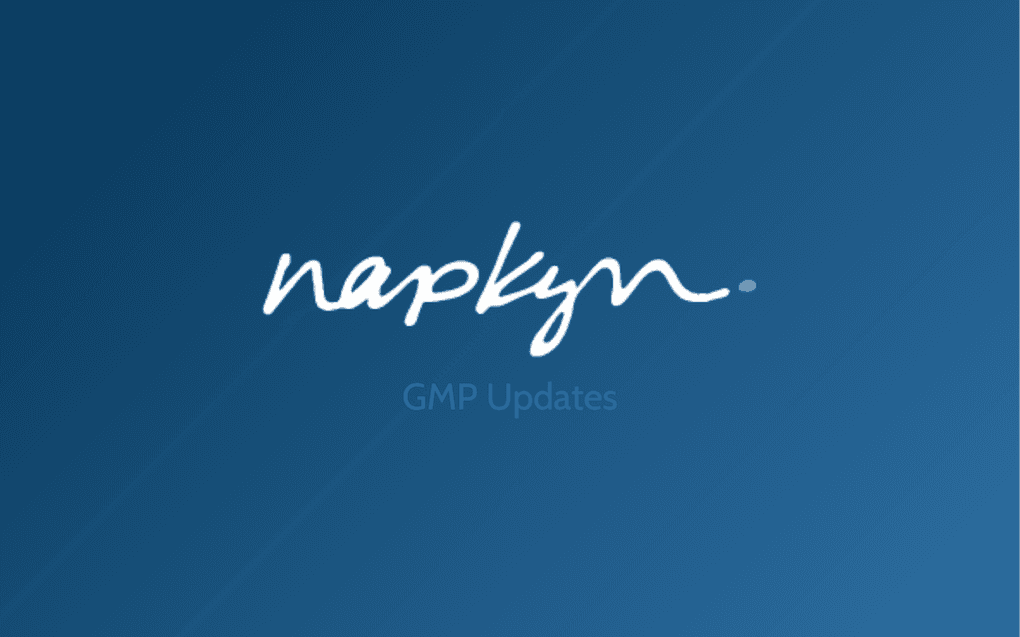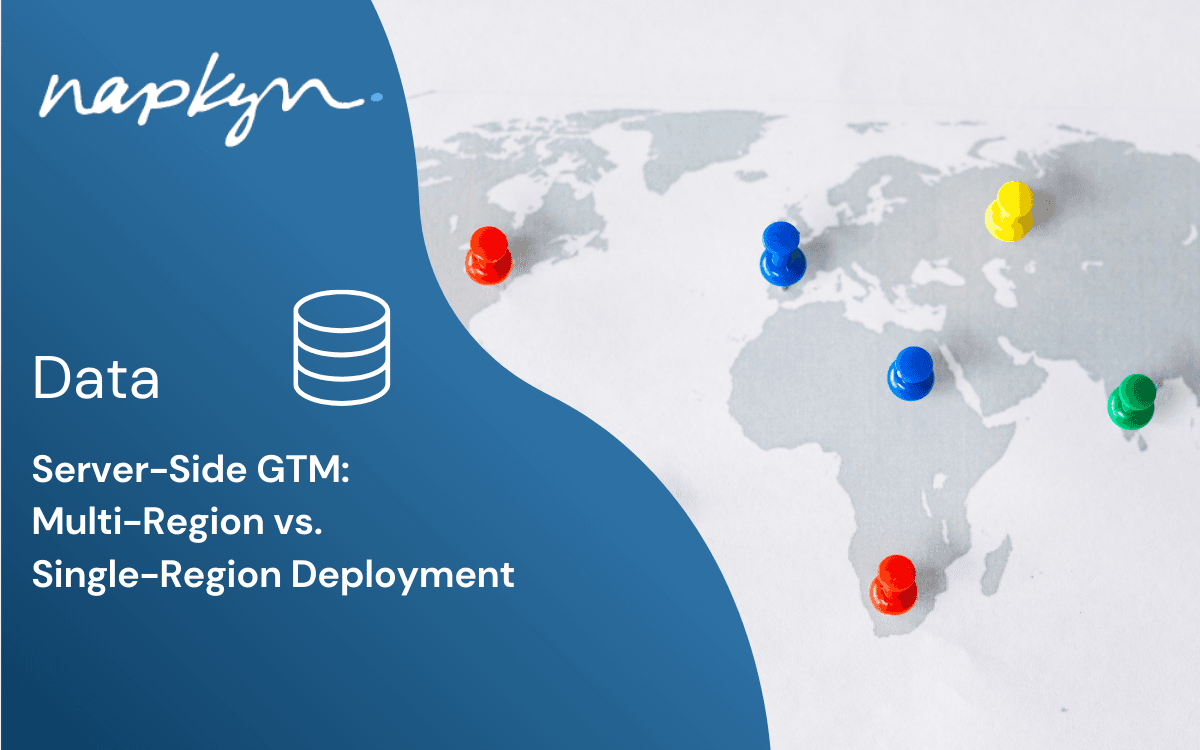

July 2024 GA4 & Google Updates
Get up to speed with the essential July 2024 updates for Google Analytics 4 (GA4) and Google Ads. Learn about new features, improved data tracking, and optimization tips to enhance your marketing strategies

Napkyn
Google Tag Manager Updates:
Starting on July 15, 2024, Google Tag and Google Tag Manager will no longer support Microsoft Internet Explorer. While scripts may still function, Google will not actively test or fix issues on Internet Explorer. This aligns with Microsoft's decision to end Internet Explorer support on June 15, 2022.
Long-expected update to Google Tag Manager’s custom template APIs - you can now write unit tests for complex APIs that return an object (Firestore, LocalStorage…).
This wasn’t possible before at all, so if you wanted to write unit tests for templates that use these APIs you had to use dummy values as placeholders. Now you can actually test against the template code. Read more...
Cookies are not going away:
Google Chrome has confirmed that they will not be phasing out cookies. Instead, they are enhancing their browser with additional privacy controls.
Read our Head of Data Solution’s article about what that is actually not a big deal
Cross-channel budgeting in Google Analytics 4
Google Analytics 4's Cross-Channel Budgeting feature, currently in closed alpha, helps users analyze historical performance data to optimize media budgets. It includes the Budgeting Overview and Projections Report, which provide data-driven insights for budget allocation, pacing, and spend projections. Users can view and adjust budgets based on performance against KPIs like spend targets, key events, and revenue. Integration data, including offline data, is used to model forecasts with confidence intervals based on historical ROAS/CPA.
Features
Budgeting Overview: Displays recently created plans and their data sources, including product links and cost import status.
Projections Report: Allows users to view projected performance against KPIs, such as spending targets, key events, and revenue, and optimize budgets across channels.
Benefits
Data-Driven Insights: Evaluate and allocate cross-channel budgets based on historical data.
Budget Monitoring: Track budget pacing and spend projections both within and across channels.
Optimization Recommendations: Receive suggestions for budget adjustments to improve overall performance.
Require config for automatically collected events
This recent update from Google Analytics mandates the presence of a configuration command or the Google tag on web pages for automatically collected events to be sent. Here’s a concise overview of what this update entails:
Mandatory Config Command: A configuration command (config) or the Google tag must now be installed on a web page to enable the collection and transmission of automatically collected events.
Prevention of Unconfigured Event Collection: Previously, automatically collected events could be sent even without proper tag configuration, leading to discrepancies in reports.
Improved Attribution Accuracy: By ensuring that only configured events are sent, this update aims to eliminate instances of (not set) attribution values in Google Analytics reports, thereby enhancing data accuracy and reliability.
Implications
Enhanced Data Quality: This change ensures that only intended and properly configured data is collected, which improves the overall quality and accuracy of analytics data.
Necessity for Proper Tag Implementation: Website administrators need to verify that their Google Analytics configuration commands or tags are correctly set up to avoid any disruption in data collection.
Attribution Clarity: With this update, reports will have more accurate attribution data, aiding better decision-making based on cleaner data sets.
More improvements to attribution channel assignments in GA4
Google Analytics has made significant improvements to how attribution data is processed to ensure more accurate channel group assignments for key events. This update aims to reduce the number of events incorrectly attributed to the "Direct" channel, providing more precise insights into the actual sources driving conversions.
These improvements enhance cross-channel and cross-device attribution, giving a comprehensive view of customer journeys. Marketers will benefit from better performance insights and the ability to optimize their campaigns more effectively based on accurate data.
Session scoped dimensions in BQ
GA4’s BigQuery export now includes session-scoped traffic sources!
The session_traffic_source_last_click (STSLC) feature introduces the last non-direct attribution model used in the Google Analytics 4 (GA4) UI into the BigQuery export. In the past, we had to create complex SQL queries and try to understand GA4’s attribution model by ourselves. If you used auto-tagging with gclid, getting a complete view required extra data from Google Ads, which was a hassle. Now, this process is much simpler using STSLC. This feature significantly reduces discrepancies between the GA4 UI and BigQuery session attribution numbers.

Additional UTM fields added to the BigQuery Event export for advanced channel analysis
Google has added three new fields (batch_page_id, batch_ordering_id, batch_event_index) to the BigQuery Event export tables so you can replicate the browser's collection order for events exported to BigQuery.
📢 You can now replicate the browser's collection order for events exported to BigQuery with new fields in the Event export tables. The new fields are:
🔗 batch_page_id
🔗 batch_ordering_id
🔗 batch_event_index
Learn more here
Netflix Ads are now available in DV360

This integration features hand-curated ad breaks, frequency caps, and 1080p video quality to enhance viewer experience. With a global monthly active user base of 40 million, 45% of new members opt for the ad-supported plan, and users watch over 10 hours monthly on average.
The document emphasizes advanced targeting capabilities based on demographics, interests, and behaviors while maintaining a privacy-forward approach. It details the programmatic advertising roadmap, with an introductory launch in August 2024 and a full launch in November 2024, including ad formats such as 1:1 PMP and programmatic guaranteed, and targeting options like demographics, genres, top titles, and viewing moods.
Measurement and reporting tools are also highlighted, including Innovid, DoubleVerify, Integral Ad Science, and Google Campaign Manager. The use of clean rooms (e.g., Snowflake, Infosum, Habu) for data analysis supports categories like audience overlap, campaign reach & frequency, and campaign attribution. Additionally, the PDF outlines the ad experience, with acceptable ad lengths from 10 to 75 seconds and ad placements varying by content type, along with sensitive content blocks to ensure ads do not appear next to unsuitable content.
If you're interested in exploring this new advertising platform talk to our media team
More Insights


Google Tag Manager Tag Diagnostics: Troubleshooting and Optimization Guide

Ricardo Cristofolini
Senior Implementation Specialist, Data Solutions
Dec 11, 2024
Read More


November 2024 GA4 & GMP Updates

Napkyn
Dec 4, 2024
Read More


Server-Side Google Tag Manager: Multi-Region vs. Single-Region Deployment

Ketul Dave
Implementation Specialist
Nov 27, 2024
Read More
More Insights
Sign Up For Our Newsletter

Napkyn Inc.
204-78 George Street, Ottawa, Ontario, K1N 5W1, Canada
Napkyn US
6 East 32nd Street, 9th Floor, New York, NY 10016, USA
212-247-0800 | info@napkyn.com

July 2024 GA4 & Google Updates
Get up to speed with the essential July 2024 updates for Google Analytics 4 (GA4) and Google Ads. Learn about new features, improved data tracking, and optimization tips to enhance your marketing strategies

Napkyn
Google Tag Manager Updates:
Starting on July 15, 2024, Google Tag and Google Tag Manager will no longer support Microsoft Internet Explorer. While scripts may still function, Google will not actively test or fix issues on Internet Explorer. This aligns with Microsoft's decision to end Internet Explorer support on June 15, 2022.
Long-expected update to Google Tag Manager’s custom template APIs - you can now write unit tests for complex APIs that return an object (Firestore, LocalStorage…).
This wasn’t possible before at all, so if you wanted to write unit tests for templates that use these APIs you had to use dummy values as placeholders. Now you can actually test against the template code. Read more...
Cookies are not going away:
Google Chrome has confirmed that they will not be phasing out cookies. Instead, they are enhancing their browser with additional privacy controls.
Read our Head of Data Solution’s article about what that is actually not a big deal
Cross-channel budgeting in Google Analytics 4
Google Analytics 4's Cross-Channel Budgeting feature, currently in closed alpha, helps users analyze historical performance data to optimize media budgets. It includes the Budgeting Overview and Projections Report, which provide data-driven insights for budget allocation, pacing, and spend projections. Users can view and adjust budgets based on performance against KPIs like spend targets, key events, and revenue. Integration data, including offline data, is used to model forecasts with confidence intervals based on historical ROAS/CPA.
Features
Budgeting Overview: Displays recently created plans and their data sources, including product links and cost import status.
Projections Report: Allows users to view projected performance against KPIs, such as spending targets, key events, and revenue, and optimize budgets across channels.
Benefits
Data-Driven Insights: Evaluate and allocate cross-channel budgets based on historical data.
Budget Monitoring: Track budget pacing and spend projections both within and across channels.
Optimization Recommendations: Receive suggestions for budget adjustments to improve overall performance.
Require config for automatically collected events
This recent update from Google Analytics mandates the presence of a configuration command or the Google tag on web pages for automatically collected events to be sent. Here’s a concise overview of what this update entails:
Mandatory Config Command: A configuration command (config) or the Google tag must now be installed on a web page to enable the collection and transmission of automatically collected events.
Prevention of Unconfigured Event Collection: Previously, automatically collected events could be sent even without proper tag configuration, leading to discrepancies in reports.
Improved Attribution Accuracy: By ensuring that only configured events are sent, this update aims to eliminate instances of (not set) attribution values in Google Analytics reports, thereby enhancing data accuracy and reliability.
Implications
Enhanced Data Quality: This change ensures that only intended and properly configured data is collected, which improves the overall quality and accuracy of analytics data.
Necessity for Proper Tag Implementation: Website administrators need to verify that their Google Analytics configuration commands or tags are correctly set up to avoid any disruption in data collection.
Attribution Clarity: With this update, reports will have more accurate attribution data, aiding better decision-making based on cleaner data sets.
More improvements to attribution channel assignments in GA4
Google Analytics has made significant improvements to how attribution data is processed to ensure more accurate channel group assignments for key events. This update aims to reduce the number of events incorrectly attributed to the "Direct" channel, providing more precise insights into the actual sources driving conversions.
These improvements enhance cross-channel and cross-device attribution, giving a comprehensive view of customer journeys. Marketers will benefit from better performance insights and the ability to optimize their campaigns more effectively based on accurate data.
Session scoped dimensions in BQ
GA4’s BigQuery export now includes session-scoped traffic sources!
The session_traffic_source_last_click (STSLC) feature introduces the last non-direct attribution model used in the Google Analytics 4 (GA4) UI into the BigQuery export. In the past, we had to create complex SQL queries and try to understand GA4’s attribution model by ourselves. If you used auto-tagging with gclid, getting a complete view required extra data from Google Ads, which was a hassle. Now, this process is much simpler using STSLC. This feature significantly reduces discrepancies between the GA4 UI and BigQuery session attribution numbers.

Additional UTM fields added to the BigQuery Event export for advanced channel analysis
Google has added three new fields (batch_page_id, batch_ordering_id, batch_event_index) to the BigQuery Event export tables so you can replicate the browser's collection order for events exported to BigQuery.
📢 You can now replicate the browser's collection order for events exported to BigQuery with new fields in the Event export tables. The new fields are:
🔗 batch_page_id
🔗 batch_ordering_id
🔗 batch_event_index
Learn more here
Netflix Ads are now available in DV360

This integration features hand-curated ad breaks, frequency caps, and 1080p video quality to enhance viewer experience. With a global monthly active user base of 40 million, 45% of new members opt for the ad-supported plan, and users watch over 10 hours monthly on average.
The document emphasizes advanced targeting capabilities based on demographics, interests, and behaviors while maintaining a privacy-forward approach. It details the programmatic advertising roadmap, with an introductory launch in August 2024 and a full launch in November 2024, including ad formats such as 1:1 PMP and programmatic guaranteed, and targeting options like demographics, genres, top titles, and viewing moods.
Measurement and reporting tools are also highlighted, including Innovid, DoubleVerify, Integral Ad Science, and Google Campaign Manager. The use of clean rooms (e.g., Snowflake, Infosum, Habu) for data analysis supports categories like audience overlap, campaign reach & frequency, and campaign attribution. Additionally, the PDF outlines the ad experience, with acceptable ad lengths from 10 to 75 seconds and ad placements varying by content type, along with sensitive content blocks to ensure ads do not appear next to unsuitable content.
If you're interested in exploring this new advertising platform talk to our media team
More Insights

Google Tag Manager Tag Diagnostics: Troubleshooting and Optimization Guide

Ricardo Cristofolini
Senior Implementation Specialist, Data Solutions
Dec 11, 2024
Read More

November 2024 GA4 & GMP Updates

Napkyn
Dec 4, 2024
Read More

Server-Side Google Tag Manager: Multi-Region vs. Single-Region Deployment

Ketul Dave
Implementation Specialist
Nov 27, 2024
Read More
More Insights
Sign Up For Our Newsletter


